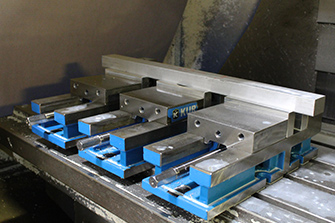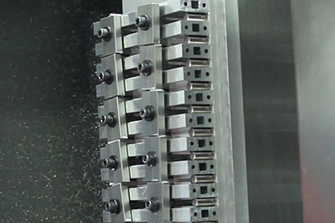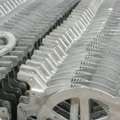
CNC Fixturing Guide
Mar 8th 2022
What is CNC Fixturing and why is it important?
CNC can be a great method for both prototyping and production. Machining fixtures hold parts and can allow you to machine a larger number of parts in a very cost-efficient way.
A CNC fixture is a work-holding device designed to secure, support or mount a workpiece in a CNC machine. It can be utilized with castings or billet material. It ensures conformity, interchangeability and repeatability during the manufacturing process. Fixtures can also allow for machining on multiple surfaces in the same set-up, reducing the handling time needed and increasing part accuracy.
When would you use a CNC Fixture?
High-volume repeat production is often the best time to utilize CNC fixturing to make your parts. This style of fixturing is referred to as a custom fixture because it is designed for a specific part or family of parts and is difficult to modify or adjust the fixture once it is built. Since each fixture is unique and custom-made, it is very space-efficient, where modular fixturing can take up more work area and reduce efficiency compared to a permanent fixture. It is important to consider the life of your part as well. For example, if you only expect to produce 200 parts each year for three years, fixturing might not be a sensible investment. But for high-volume production that spans a number of years, fixturing will yield more profits in the long run and ensure consistent high-quality parts.
One example of a great application is uniquely shaped or hard-to-hold parts. Fixtures make it easier for the machines to locate and secure the parts. Castings are a great example as they often have irregular shapes designed off datums that are relevant to the function of the part. Fixtures are usually necessary for castings, as their shape and design make them hard to hold in a machine.
Here are a few (of many) fixture options:

Vise jaws – These hold your parts in place and keep them secure while machining. There are standard options and custom options depending on the shape of your part. This can be an inexpensive option for simple parts or lower volume runs since it uses existing clamping tooling.

Fixture plate with locators and strap clamps – This fixture style allows the part to be machined on 3 sides during a single setup and is great for increased volumes

Rotating 4th axis fixtures – Adding another axis into your manufacturing process helps save manufacturing time, and allows you to manufacture certain parts in less steps while using a standard vertical machining center. This fixture allows 6 sides of the part to be machined in to setups, creating two finished parts per cycle

Multi axis tombstones – Tombstones allow for multiple phases in production, as each face of the fixture can have a different setup. This is great for high production volumes on multiple-step parts, often used in a horizontal milling machine

Hydraulic clamping – Hydraulic clamping is often faster for loading/unloading parts, saving time and labor. These savings are multiplied when this fixture style is used with high volumes
Here are some parts that benefitted from CNC fixturing:
What to consider when designing and deciding on fixturing
What should you consider when you are designing and building your CNC fixtures?
Nature of part - What is the shape of the part? What elements are critical to the part's function in its final application?
Quantity required - Are you making three parts or three hundred? A fixture will allow for consistent high-quality output throughout the life of the project, and higher volumes can justify the cost.
Material type - What is the stability of the material? Will it move around a lot when machined? How will the fixture need to support that?
Tolerances of part - What elements of the part are most critical? What points need to be available on the part for location?
Type of machine used - The fixture needs to be designed for the machine it will run in. Where will it be located and held in the machine?
Life of part - is this part being made for five weeks or five years? Is the life of the part long enough that fixturing makes financial sense?
Consider the various clamping styles: manual, hydraulic, air, etc. What makes sense for the specific application and volumes?
CNC Fixturing can be as unique as the parts themselves. The benefits and payoff make it a worthwhile investment in large projects. To learn more about designing and building fixtures for your next CNC Machining project or qualifying a CNC machining supplier, Contact Us at Wisconsin Metal Parts, Inc. We’re here to serve you. We’ve been welcoming CNC machining challenges since 1988.











